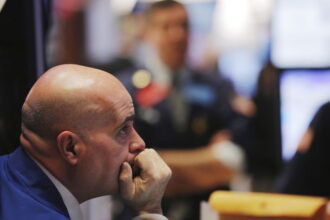Investing.com – OPEC has acted as OPEC in blaming everything but itself for the market crash in oil, and issuing higher forecast numbers to reinforce its bet that oil demand is well and fine.
In its latest monthly report on oil supply-demand, OPEC nudged up its forecast for world oil demand growth in 2023 to 2.46 million barrels per day, or bpd — up 20,000 from the previous forecast. In 2024, OPEC sees demand rising by 2.25 million bpd, unchanged from last month.
This is the last report before OPEC and its allies, known as OPEC+, meets on Nov. 26 to set policy. The group has been cutting production since late 2022 to support the market and its latest agreement calls for output curbs throughout 2024.
A lifting of pandemic lockdowns in China has helped oil demand rise in 2023. OPEC has consistently forecast stronger demand growth for next year than other forecasters such as the International Energy Agency.
“The OPEC monthly oil market report appeared to push back against demand concerns, referencing overblown negative sentiment around Chinese demand while raising demand growth forecasts for this year and leaving them unchanged for next,” observed Craig Erlam, analyst at online trading platform OANDA.
“The question now is whether OPEC+ members Russia and Saudi Arabia will push back with cuts beyond December.”
But some say OPEC has only itself to blame for the near 15% slump in crude prices since end-September that has driven the market to July lows. The group’s overzealousness in cutting production to create an artificially-tight supply picture for oil that would lead to $100 per barrel pricing has not impressed shorts , who have been selling the market down the past three weeks in a row.
“The bears have called OPEC’s bluff,” said John Kilduff, founding partner at energy hedge fund Again Capital. “The jury is still out on whether OPEC’s latest bluff on demand, that’s in this monthly report, will last beyond November 26.”
Investor concerns over oil demand has also grown since the Energy Information Administration, or EIA, said last week that US crude production this year will rise by slightly less than previously expected and that demand will fall.
New York-traded , or WTI, crude for December delivery, settled at $78.26 per barrel, up $1.09, or 1.4% on the day, adding to the 2.4% rise over two previous sessions. For last week though, WTI ended down 4.1%, after prior back-to-back weekly losses 6% and 3%. The US crude benchmark also tumbled 11% for October.
As WTI settled, UK-origin crude’s most-active January contract was at $82.54, up $1.11, or 1.4% after the near 2.5% gain over the past two sessions. Still, Brent finished last week down 3.8%, after prior weekly losses of 6% and 2%. The global crude benchmark also lost 11% in October.
U.S. CPI in focus
]Additionally, U.S. for October on Tuesday, for an update on the Fed’s progress in its battle to keep lowering inflation from last year’s multi-decade highs.
Hawkish signals from Federal Reserve officials have boosted the dollar of late, weighing on the crude market as a stronger U.S. currency makes the commodity more expensive for foreign buyers.
Read the full article here










